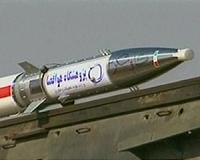 |
Greenbelt MD (SPX) Feb 14, 2011 The NASA National Polar-orbiting Operational Environmental Satellite System (NPOESS) Preparatory Project (NPP) climate/weather satellite is undergoing flight environmental testing at Ball Aerospace and Technologies Corp's production and test facility in Boulder, Colo. The NPP satellite began environmental testing in November 2010 and has successfully completed vibration, acoustics and shock environments. In addition, the electromagnetic compatibility/electromagnetic interference testing was completed in January 2011. Currently the satellite is undergoing compatibility testing with the ground system and mission operations team. Later this month, the satellite will be moved into Ball's thermal vacuum chamber where it will be subjected to extreme temperatures to simulate what the satellite will encounter in space. NPP continues the pioneering monitoring of Earth's climate achieved by NASA's Earth Observing System suite of satellites over the past decade. The mission is also the precursor of the next generation of operational polar-orbiting environmental satellites for the National Oceanic and Atmospheric Administration (NOAA). NPP will continue the operations of NOAA's current generation of polar-orbiting environmental satellites, which have for over 40 years protected lives and property as well as supported U.S. commerce and weather forecasts. The follow-on to NPP is the Joint Polar Satellite System (JPSS), which will be developed by NASA for NOAA. "I am proud of the NPP team's commitment and dedication; they have kept the satellite on schedule with excellent results," stated Ken Schwer, NPP Project Manager, at NASA's Goddard Space Flight Center, Greenbelt, Md. "We are confident that we will deliver an excellent satellite for our October 25, 2011, launch date." Throughout the satellite test campaign, NPP has worked closely with the JPSS program to ensure the compatibility and readiness of the JPSS ground and data systems to support the NPP on-orbit mission. In April 2011, the entire ground and data systems will undergo rigorous end-to-end testing to verify requirements and prepare for launch. NPP just completed a several month review process with a review team that independently checked to ensure all aspects of the mission are on track for launch. The successful results of the review were presented to NASA Headquarters, Washington, in January 2011 where officials from NASA's Science Mission Directorate approved NPP's plan, budget, schedule, and success criteria for achieving the October 25, 2011, launch and on-orbit mission. The five-instrument suite includes:
the Visible/Infrared Imager Radiometer Suite (VIIRS); NPP's advanced ultraviolet, visible, infrared, and microwave imagers and sounders will provide continuity of climate observations and enhance weather forecasting capabilities for the nation's civil and military users of satellite data.
Share This Article With Planet Earth
Related Links NPP at Goddard Space Technology News - Applications and Research
 Iran Unveils Homemade Satellites And Carrier
Iran Unveils Homemade Satellites And CarrierTehran, Iran (XNA) Feb 08, 2011 Iran unveiled four domestically- manufactured satellites on Monday, two years after it launched the first self-developed satellite into orbit, the local satellite Press TV reported. Four national satellites, Fajr (Dawn), Rasad (Observation), Zafar (Victory) and Amirkabir I, and a satellite carrier Kavoshgar 4 (Explorer 4) were unveiled on Monday by Iranian President Mahmoud Ahmadinejad, th ... read more |
|
| The content herein, unless otherwise known to be public domain, are Copyright 1995-2010 - SpaceDaily. AFP and UPI Wire Stories are copyright Agence France-Presse and United Press International. ESA Portal Reports are copyright European Space Agency. All NASA sourced material is public domain. Additional copyrights may apply in whole or part to other bona fide parties. Advertising does not imply endorsement,agreement or approval of any opinions, statements or information provided by SpaceDaily on any Web page published or hosted by SpaceDaily. Privacy Statement |